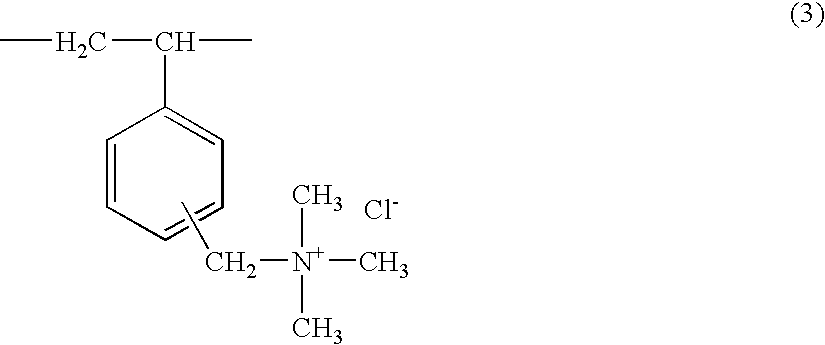Resin composition for sealing optical device, cured product thereof, and method of sealing semiconductor element
a technology of optical devices and resin compositions, applied in the field of optical materials, can solve problems such as problematic use of resins in these applications, and achieve the effects of excellent heat resistance, ultraviolet light resistance, and excellent storage stability
- Summary
- Abstract
- Description
- Claims
- Application Information
AI Technical Summary
Benefits of technology
Problems solved by technology
Method used
Image
Examples
synthesis example 1
[0098]A 1 L three-neck flask was fitted with a stirrer and a condenser tube. The flask was then charged with 109 g (0.8 mols) of methyltrimethoxysilane, 24 g (0.2 mols) of dimethyldimethoxysilane, and 106 g of isobutyl alcohol, and the mixture was cooled in ice with constant stirring. With the temperature inside the system maintained at 0 to 20° C., 60.5 g of 0.05 N hydrochloric acid solution was added dropwise. Following completion of the dropwise addition, the resulting reaction mixture was stirred for 11 hours at a reflux temperature of 80° C. Subsequently, the resulting reaction liquid was cooled to room temperature, and 150 g of xylene was added to dilute the reaction liquid. This diluted reaction liquid was then poured into a separating funnel, and washed repeatedly with 300 g samples of water until the electrical conductivity of the separated wash water fell to a value of 2.0 μS / cm or lower. The water was then removed from the washed reaction liquid by azeotropic dehydration,...
synthesis example 2
[0101]A 1 L three-neck flask was fitted with a stirrer and a condenser tube. The flask was then charged with 68.1 g (0.5 mols) of methyltrimethoxysilane, 60.1 g (0.5 mols) of dimethyldimethoxysilane, and 118 g of isobutyl alcohol, and the mixture was cooled in ice with constant stirring. With the temperature inside the system maintained at 0 to 20° C., 54 g of 0.05 N hydrochloric acid solution was added dropwise. Following completion of the dropwise addition, the resulting reaction mixture was stirred for 11 hours at a reflux temperature of 80° C. Subsequently, the resulting reaction liquid was cooled to room temperature, and 150 g of xylene was added to dilute the reaction liquid. This diluted reaction liquid was then poured into a separating funnel, and washed repeatedly with 300 g samples of water until the electrical conductivity of the separated wash water fell to a value of 2.0 μS / cm or lower. The water was then removed from the washed reaction liquid by azeotropic dehydration...
synthesis example 3
[0104]A 1 L three-neck flask was fitted with a stirrer and a condenser tube. The flask was then charged with 136.2 g (1.0 mols) of methyltrimethoxysilane and 106 g of isobutyl alcohol, and the mixture was cooled in ice with constant stirring. With the temperature inside the system maintained at 0 to 20° C., 81 g of 0.05 N hydrochloric acid solution was added dropwise. Following completion of the dropwise addition, the resulting reaction mixture was stirred for 11 hours at a reflux temperature of 80° C. Subsequently, the resulting reaction liquid was cooled to room temperature, and 150 g of xylene was added to dilute the reaction liquid. This diluted reaction liquid was then poured into a separating funnel, and washed repeatedly with 300 g samples of water until the electrical conductivity of the separated wash water fell to a value of 2.0 μS / cm or lower. The water was then removed from the washed reaction liquid by azeotropic dehydration, and the volatile fraction was adjusted to 30...
PUM
| Property | Measurement | Unit |
|---|---|---|
| temperature | aaaaa | aaaaa |
| thickness | aaaaa | aaaaa |
| temperature | aaaaa | aaaaa |
Abstract
Description
Claims
Application Information
 Login to View More
Login to View More - R&D
- Intellectual Property
- Life Sciences
- Materials
- Tech Scout
- Unparalleled Data Quality
- Higher Quality Content
- 60% Fewer Hallucinations
Browse by: Latest US Patents, China's latest patents, Technical Efficacy Thesaurus, Application Domain, Technology Topic, Popular Technical Reports.
© 2025 PatSnap. All rights reserved.Legal|Privacy policy|Modern Slavery Act Transparency Statement|Sitemap|About US| Contact US: help@patsnap.com

